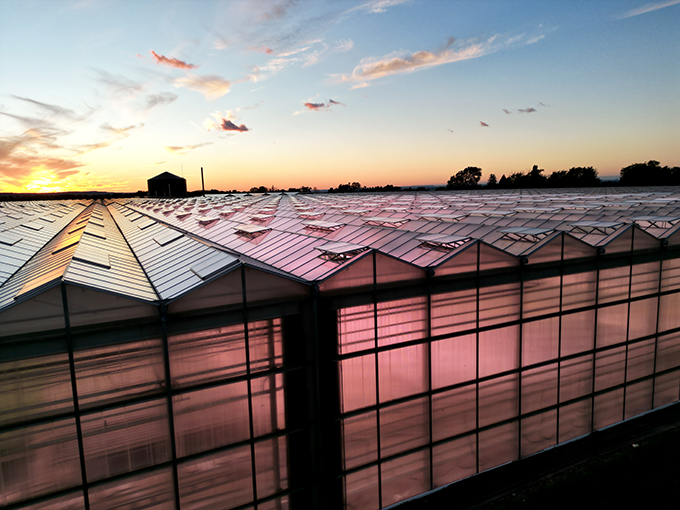research
Leafy Greens
“Heliospectra was the first group we partnered with since Ljusgårda was established, and they have played a significant role in our development”.
Interview with Shirin Moradi from Ljusgårda:
Shirin Moradi, Plant Specialist in AI and Data Science at Ljusgårda, one of Europe’s largest indoor lettuce farms, shares her experiences and insights into the research being conducted at Ljusgårda in collaboration with Heliospectra. Heliospectra has been a research partner of Ljusgårda from the very beginning. Ljusgårda’s mission to optimize agriculture in a sustainable way fits perfectly with Heliospectra’s commitment to intelligent, resource-efficient crop production, making this collaboration ideal for advancing innovative techniques. The most recent research was on the growth performance of two types of lettuce grown under different lighting strategies, with far-red and blue light.
Shirin has worked at Ljusgårda for about two years. Prior to joining the company, she was a professor at the Horticultural Sciences Research Institute (HSRI). Impressed by the high quality of work and professionalism at Ljusgårda, she was keen to join the team.
At Ljusgårda, Shirin leads the development and implementation of advanced sensors, measurements and technologies to assess plant growth, well-being and quality. Her goal is to optimize results and methods for current products, improve quality and quantity, and develop new techniques, cultivation recipes and methods for new products.
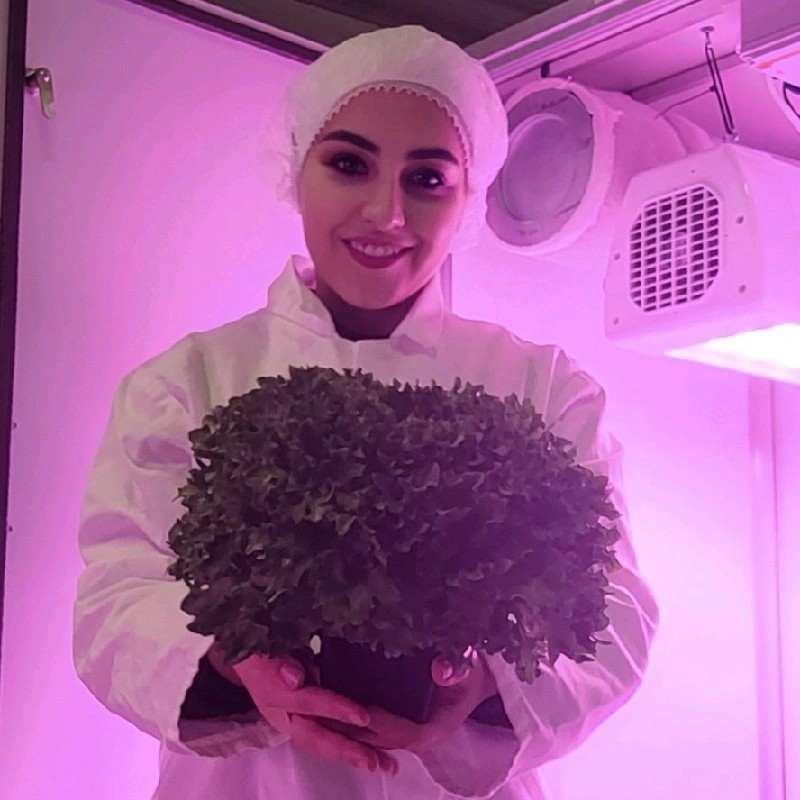
Shirin Moradi,
Plant Specialist in AI and Data Science at Ljusgårda
Collaboration with Heliospectra
Shirin emphasizes the importance of partnerships in advancing research and technology in controlled environment agriculture. “At Ljusgårda, we collaborate closely with industry partners such as Heliospectra to push the boundaries of research and technology,” she says. Heliospectra’s advanced lighting systems enable Ljusgårda to fine-tune light spectra and intensities to optimize plant growth, health and productivity. “Heliospectra was the first group we partnered with since Ljusgårda was established, and they have played a significant role in our development”.
This collaboration involves joint research projects, data sharing, and the development of new methodologies to ensure that Ljusgårda’s cultivation practices remain at the forefront of the industry. Conducting research studies in collaboration with Ljusgårda is also highly beneficial for Heliospectra as a lighting company. By gaining valuable insights into plant needs and future requirements for LED lighting technology.
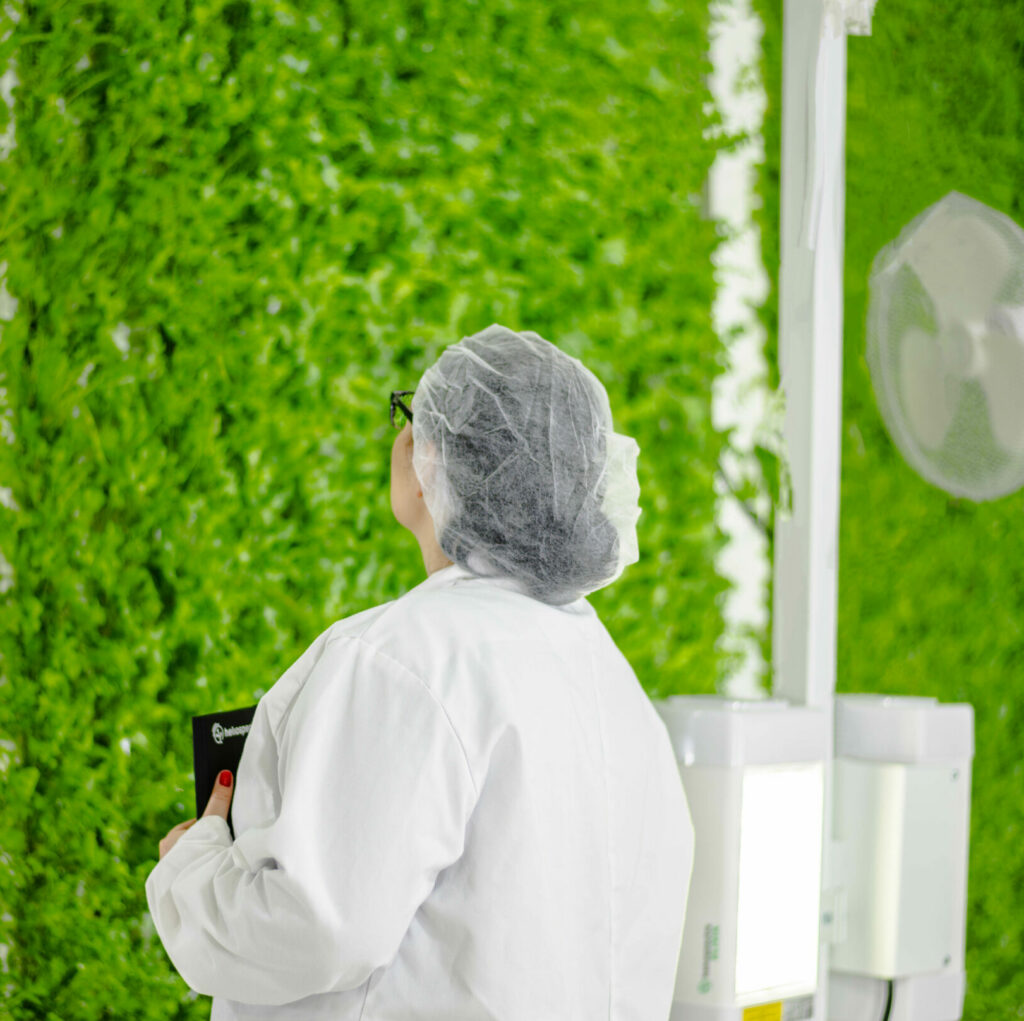
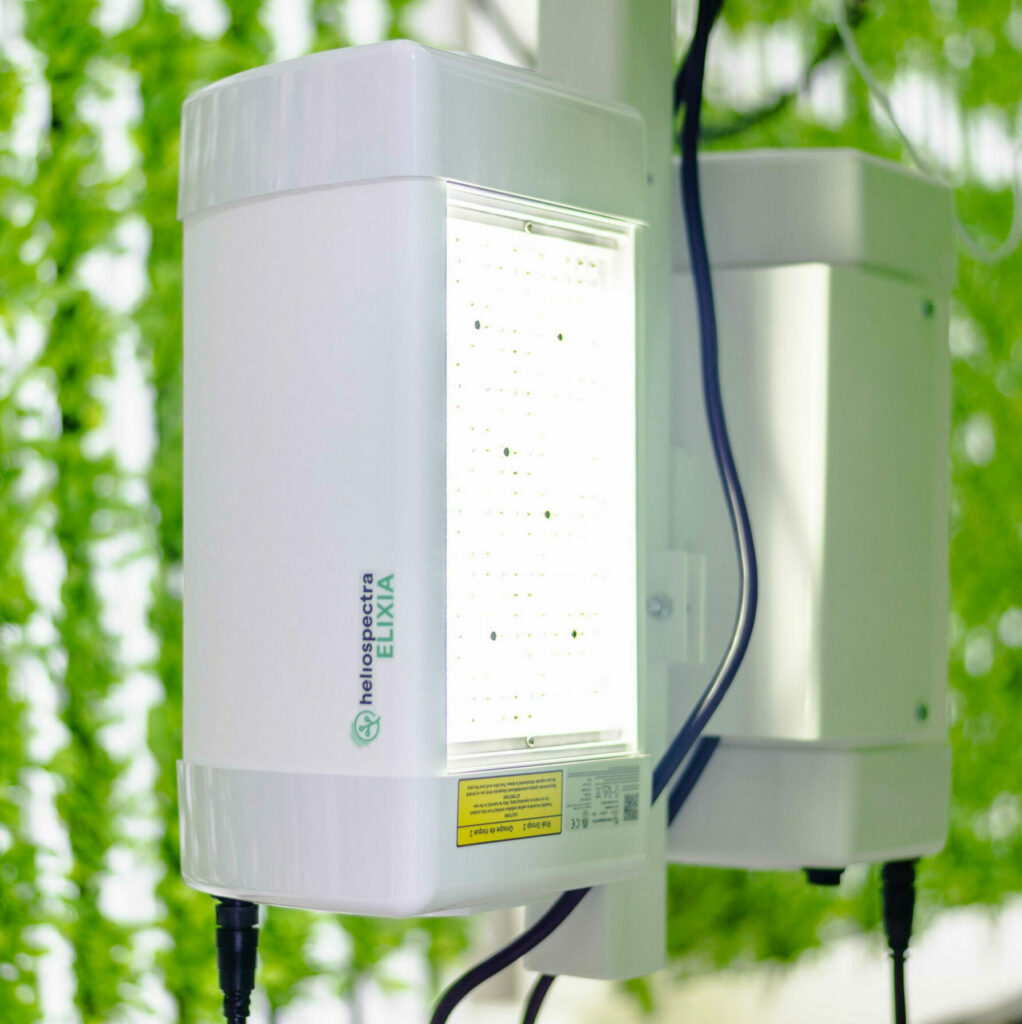
Research on Lettuce Growth and Light Spectra
Shirin Moradi has achieved remarkable results in several R&D projects involving different plants. However, she particularly highlights her collaboration with Ida Fällström, Plant & Light Expert at Heliospectra, noting that studying the effect of blue light at the end of the day has been one of the most interesting projects in recent months. The project evaluated different lighting strategies, when to apply far-red and blue light for different plant responses.
One conclusion from the research showed that for green lettuce, the biomass production was highest for the spectrum with PAR+FR. When moved to finish in end of production (EOP) without far-red for the last 7 days the lettuce showed a reduction in potential biomass gain.
Could you explain the methodology used in your study to investigate the effects of different lighting strategies on lettuce?
“In our study to investigate the effects of different lighting strategies on lettuce, we followed a structured research approach,” Shirin explains. This approach included identifying challenges, formulating hypotheses, designing experiments, conducting controlled experiments, collecting data and analyzing results. Their controlled environment agricultural R&D facilities, equipped with advanced lighting systems from Heliospectra and other light company, various hydroponic systems, different types of cameras, and integrated sensors, allowed precise monitoring of various plant growth parameters, enabling high-level environmental control.
“We first identified key challenges and research questions about lighting’s impact on growth and quality,” adds Shirin. “After refining our hypotheses through literature review, we conducted experiments with uniform seedlings and monitored various growth parameters using precise sensors.”
Data collection focused on plant height, leaf number and biomass, with additional quality assessments. Statistical analysis then identified significant differences and correlations, providing valuable insights for optimizing growth conditions.
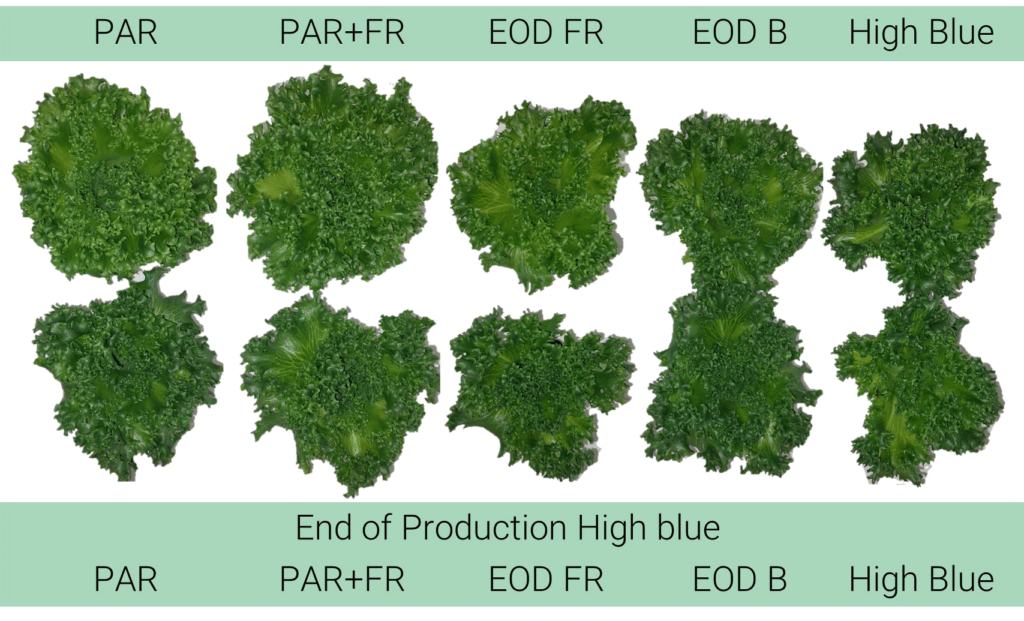
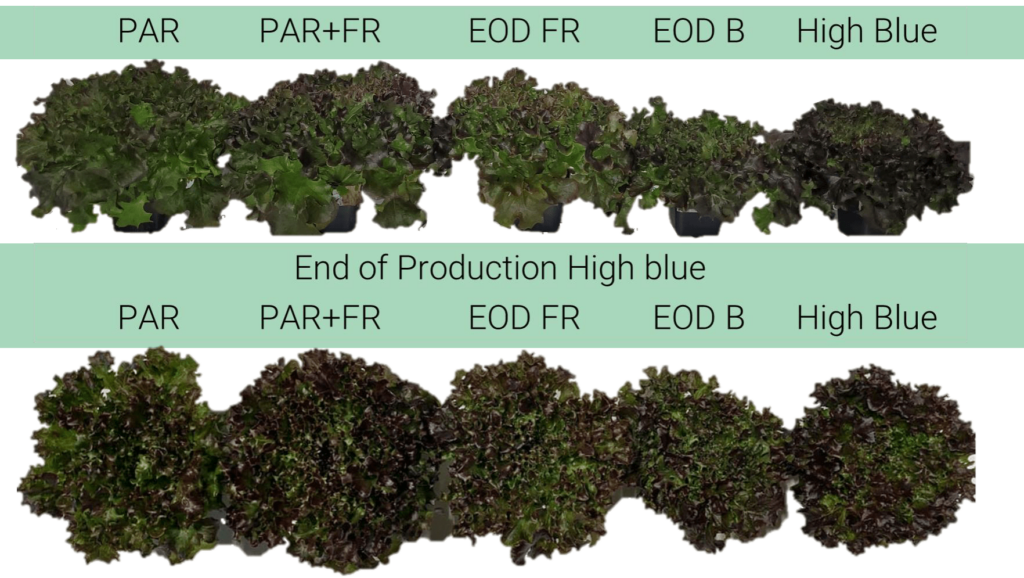
Coloration for green lettuce (left) and red lettuce (right) 40 DAS, for all spectra with and without EOP treatment.
Insights on Light Spectrum Manipulation
Navigating the fascinating world of light and its effects on plant growth and development is complex. “Each component of light brings about a range of changes in the plant at specific times on a molecular and physiological levels” notes Shirin. She explains that for example, blue light produces compact plants and increases flower production in saffron, while red light inhibits flowering. These insights highlight the importance of understanding and manipulating light spectra to achieve desired plant traits.
From Shirin’s research into manipulating the light spectrum in lettuce production, several key takeaways have emerged for growers. She explains that the key takeaways include optimized growth and yield, improved nutritional quality, tailored light recipes, energy efficiency, consistency and control, and shortened growth cycles. Customized light combinations can optimize photosynthesis and reduce energy costs. This knowledge helps growers achieve higher quality produce, reduce costs and improve sustainability.
The Role of Smart Lighting Technology
Smart lighting technology has had a profound impact on the ability to manipulate plant morphology and quality. “LED lights have created a new world for us researchers,” Shirin states. Experimenting with different light spectra at different stages of the plant cycle has yielded surprising results. “Monochromatic light creates a kind of artificial stress in the plant, which has a significant impact on the production of secondary metabolites,” she explains. Smart lighting technology, such as Heliospectra’s ELIXIA adjustable-spectrum light used in the research, allows for precise manipulation of plant traits to achieve specific goals.
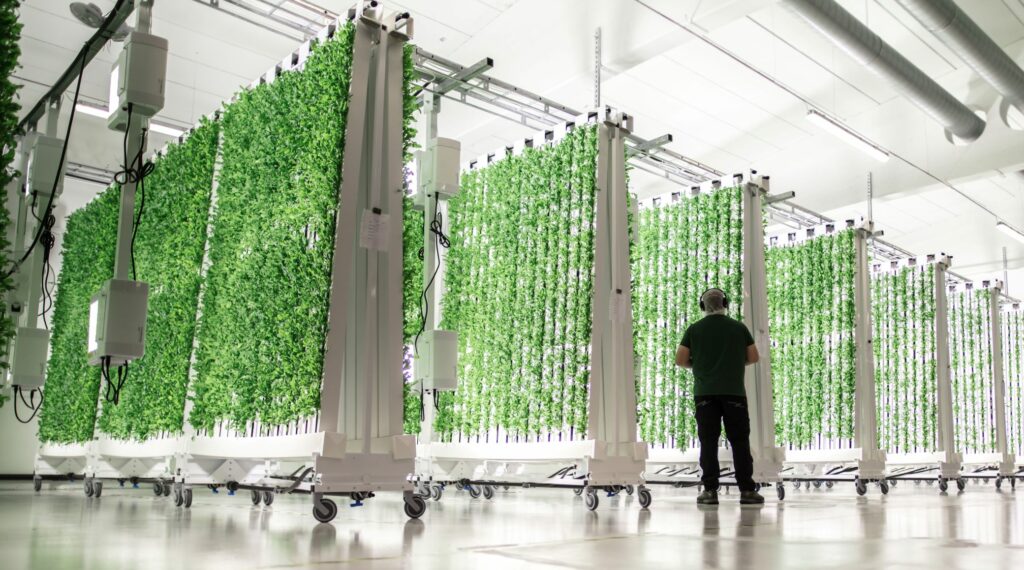
Practical Implications and Future of Agriculture
Shirin’s research findings have practical implications for improving crop quality and sustainability. By tailoring the plant’s lighting based on customer needs, they can enhance post-harvest quality, flavor, and other traits. “Engineering plant growth is a complex process that cannot be controlled by light alone. As a researcher, I must always consider all environmental factors,” she notes.
What role do you see for scientific research in shaping the future of agricultural practices, particularly in relation to sustainable food production?
Shirin believes that scientific research is crucial in shaping the future of agricultural practices. “Research drives the development of new technologies and innovations, promotes sustainable practices, aids in developing climate-resilient crop varieties, and informs data-driven decisions for better farm management,” she explains. Ultimately, scientific research addresses global food security challenges by increasing food production in a sustainable way.
In summary, Shirin Moradi’s work at Ljusgårda exemplifies the integration of advanced technology and horticultural science to advance sustainable agricultural practices. Her insights underscore the importance of collaboration, innovation and continuous research to achieve high quality, efficient and sustainable food production.
For more detailed findings and specific results from the research, you can download the comprehensive research poster available below:
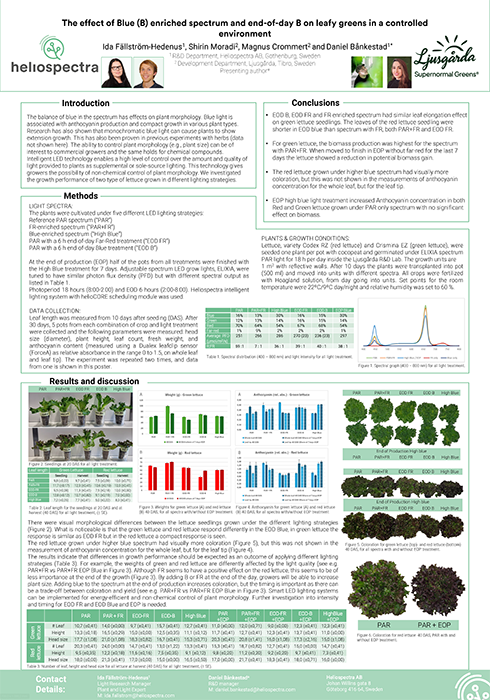
The effect of Blue (B) enriched spectrum and end-of-day B on leafy greens in a controlled environment
This poster provides an in-depth overview of the methodologies used, data collected, and the conclusions drawn from the study.
Get in touch with us!
From custom light planning, to tailored quotes, and everything in between,
our team of horticulture experts is always ready to assist.



